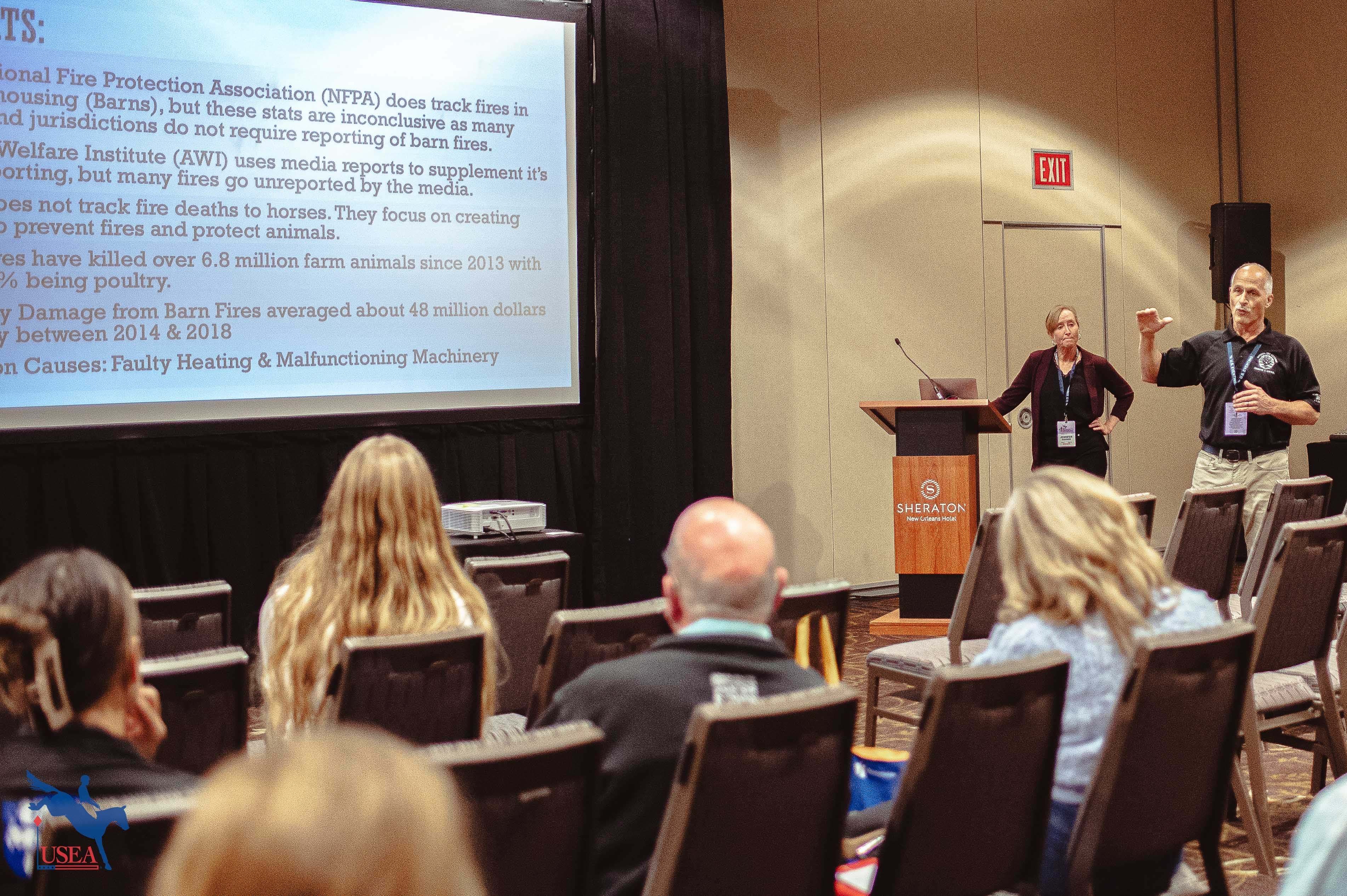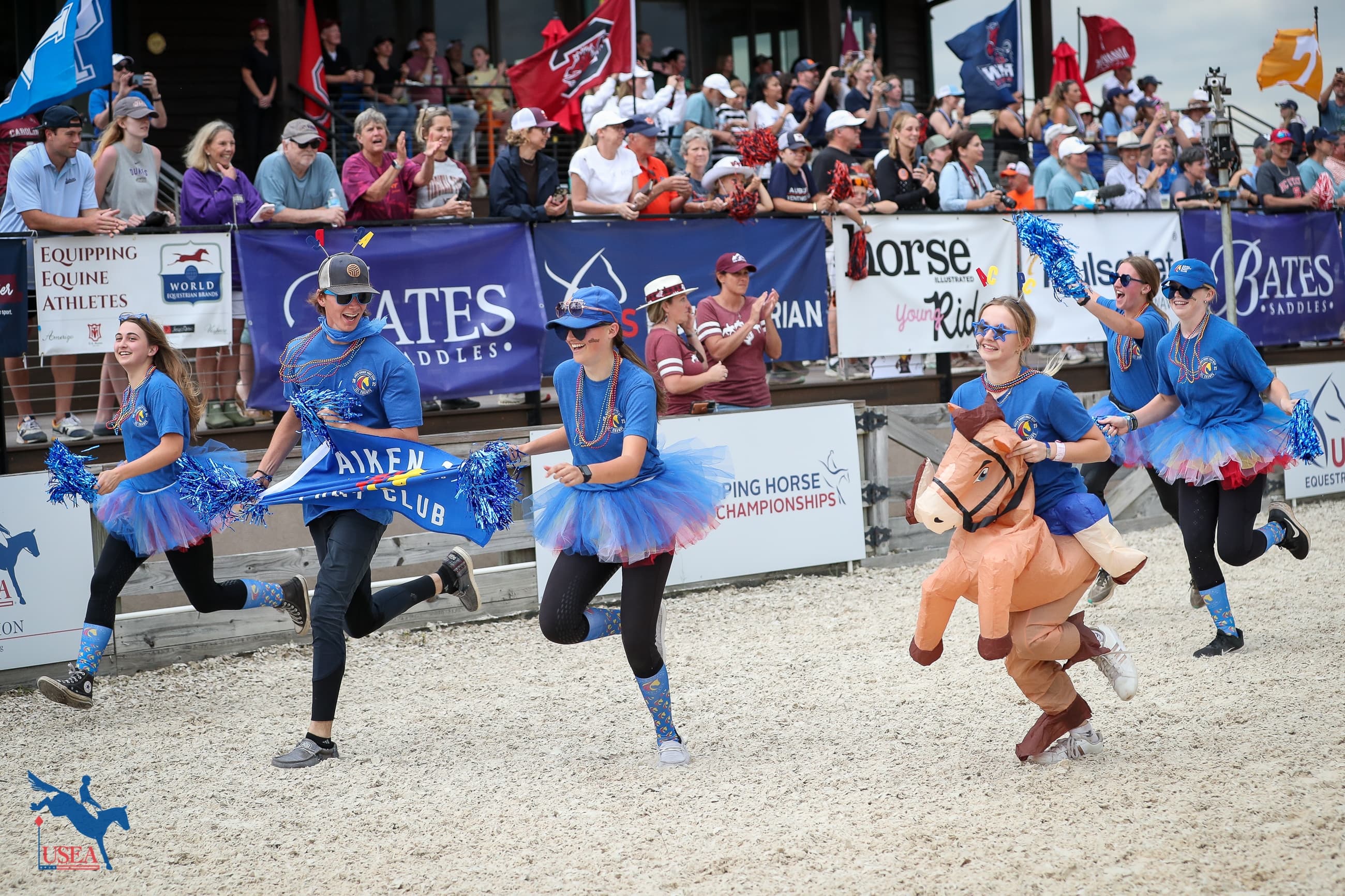Staying Sound: The Importance of Foot Balance
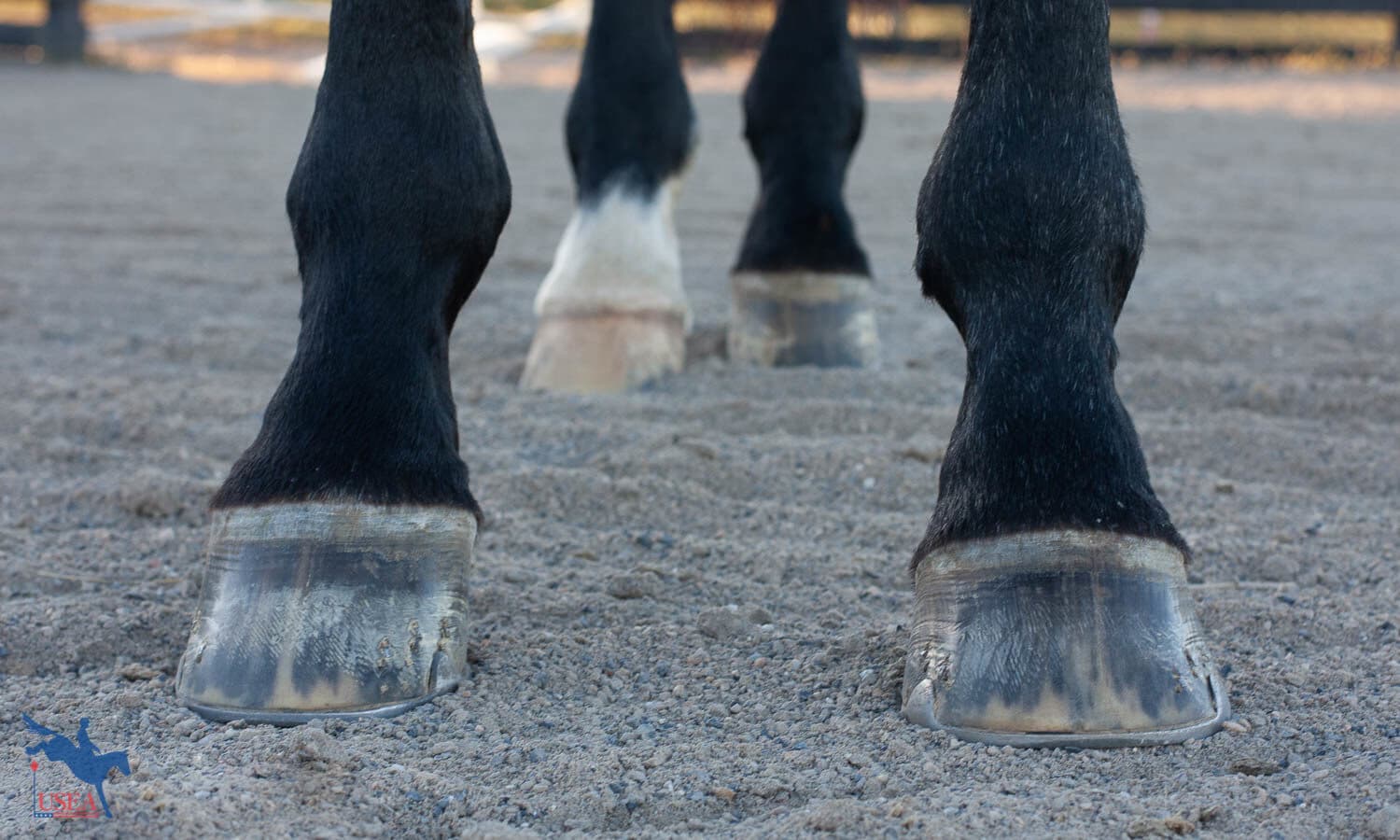
There’s a saying that goes, “No hoof, no horse,” and in many ways it’s true. The hoof supports the entirety of the horse’s body and allows him to move athletically, flexing and extending to support movement. The hoof resists compression caused by the horse’s weight, absorbs and stores impact energy, and provides stability.
“There are so many things that go into a healthy and sound horse, including nutrition, training, mental and physical well-being, and oral health and dental balance, but I’m going to focus on the foot,” began Dr. Maureen Kelleher, Clinical Assistant Professor of Sports Medicine and Surgery at Virginia Tech's Marion duPont Scott Equine Medical Center (EMC) in Leesburg, Virginia. “If you think about all the functions a horse can do, regardless of whether the horse is an old broodmare or a top show horse, without the hoof the horse cannot support his body, absorb impact, or remain stable.”
Anatomy of the Hoof
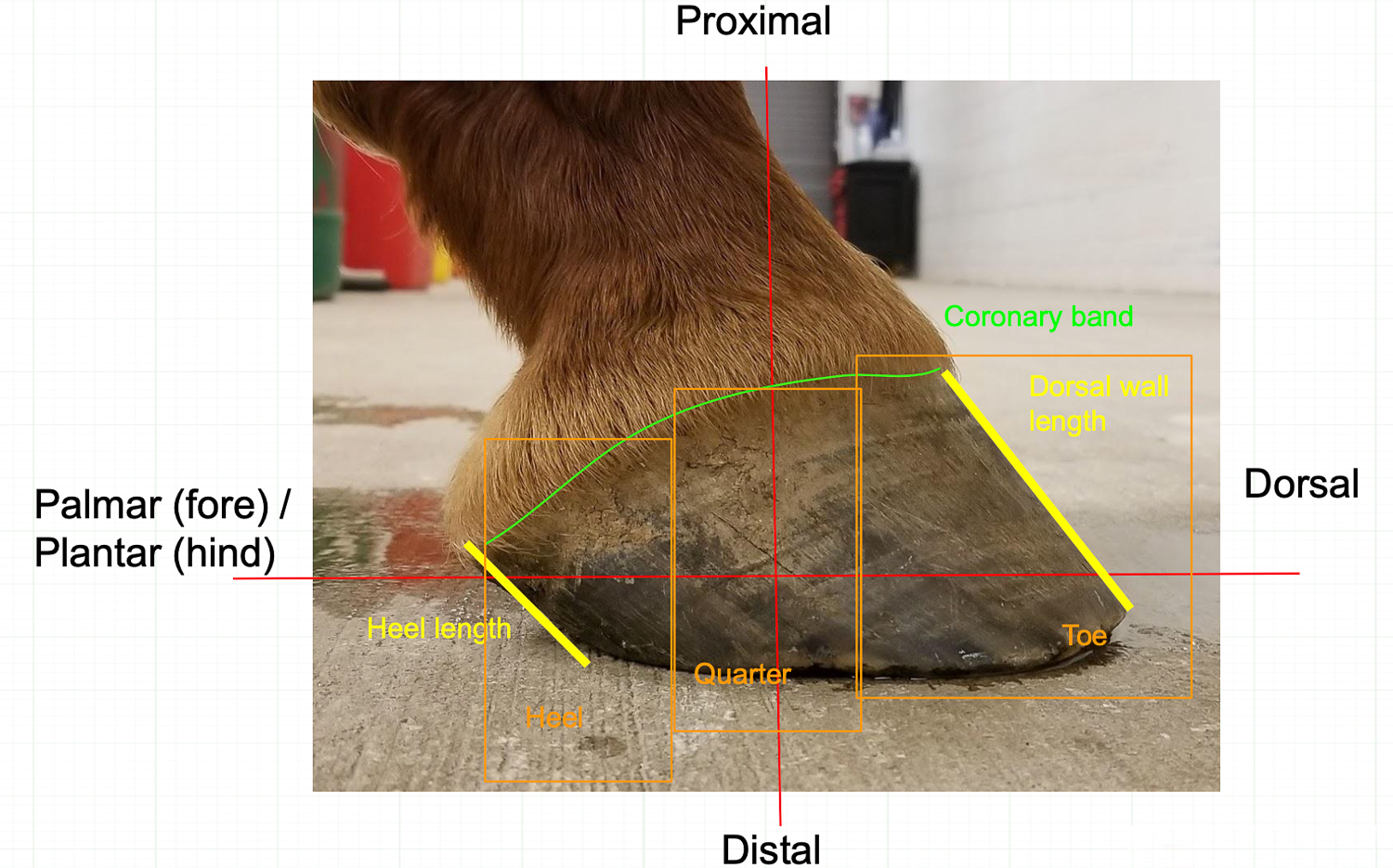
To begin, Kelleher provides an overview of important terminology to understand when learning about the foot. When viewed from the side, the front portion of the hoof is called the dorsal aspect and the rear portion of the hoof is called the palmar aspect (for the foreleg) or plantar aspect (for the hind leg). Then, the top region of the foot is called the proximal aspect and the bottom region is called the distal aspect. The foot can also be divided into three regions from the dorsal aspect to palmar/planter aspect – the toe region, the quarter region, and the heel region. When discussing foot balance, dorsal length and heel length are also important, which are measured from the horse’s coronary band to the ground surface.
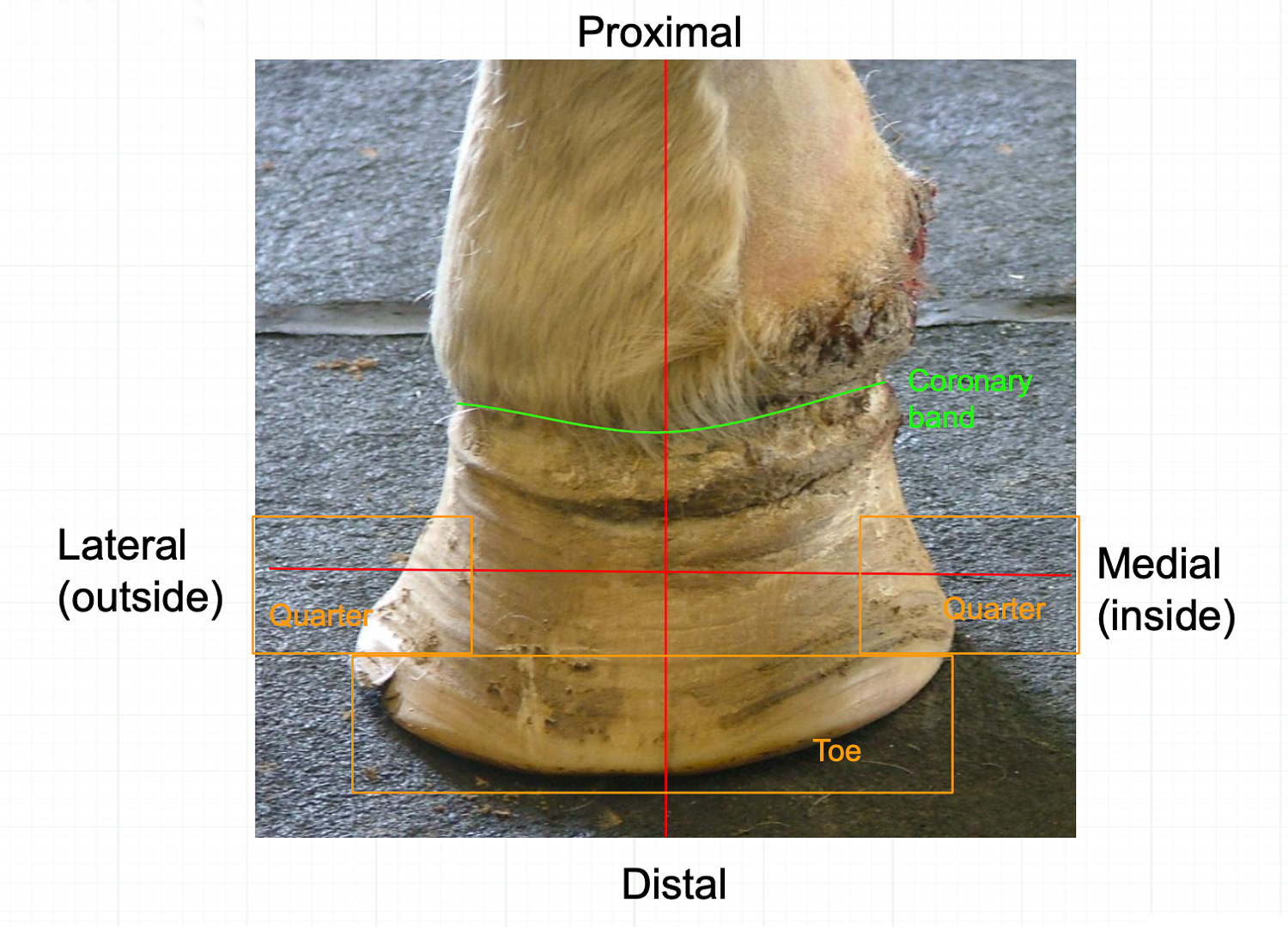
When viewed from the front, the lateral aspect of the hoof is the surface facing to the outside, and the medial aspect is the surface facing to the inside. From the front, you can see the entirety of the toe region as well as the lateral and medial quarter regions.
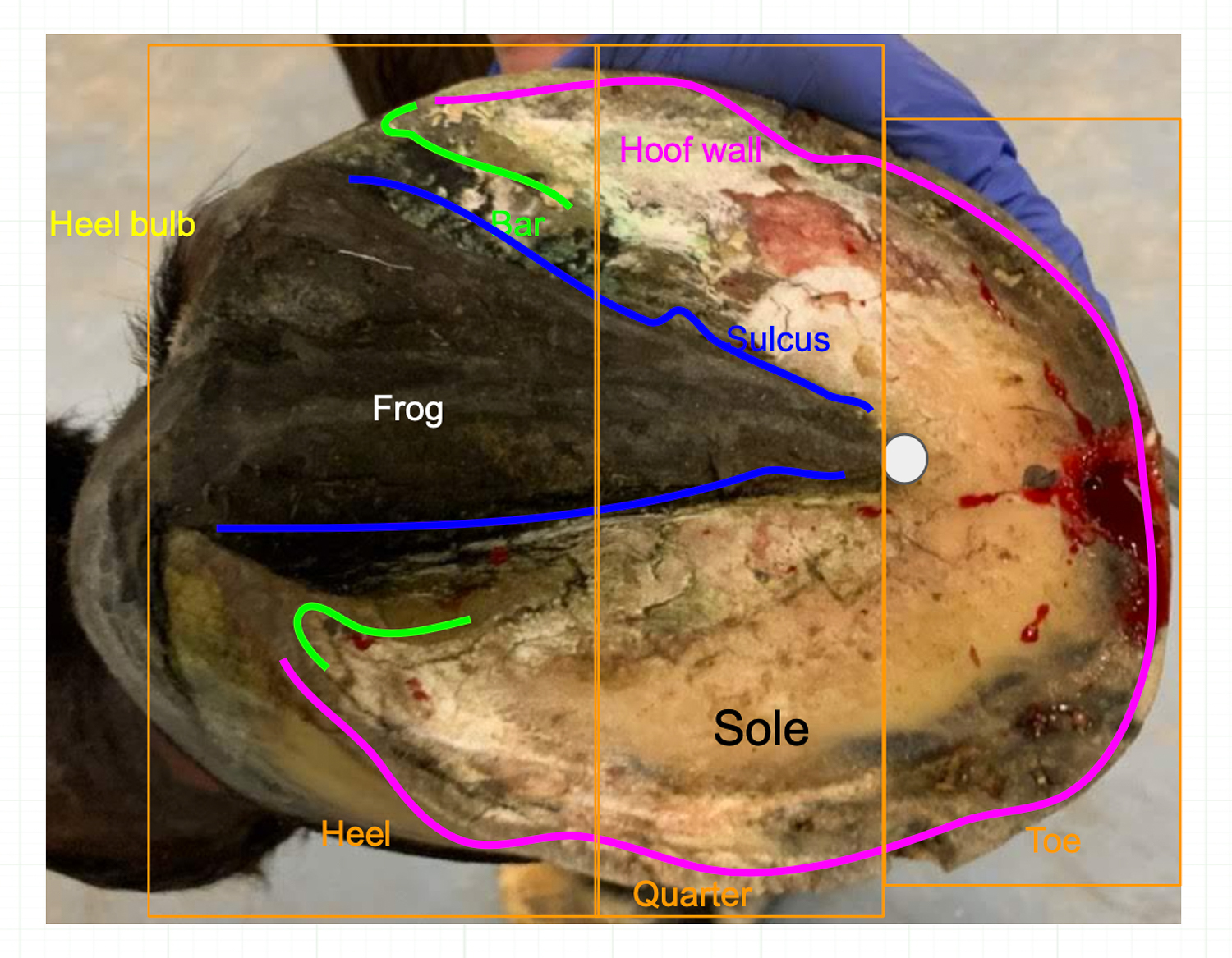
The bottom of the hoof is referred to as the solar surface and is made up of the sole, the frog, the sulcus and bar, the hoof wall, and the heel bulb. Again, the solar surface can be divided into toe, quarter, and heel regions. The white line is at the junction of the hoof wall and the sole, and Kelleher warned that its name can be deceiving because “the white line is not always white, and it can be confused with the inner hoof wall.”
On the surface of the hoof, you may also see horn tubules, which run perpendicular to the ground from the proximal to the distal portion of the hoof, and growth rings, which run parallel to the ground and circumferentially around the hoof.
“The hoof capsule is composed of keratin and is similar to your fingernail,” Kelleher described. Within the interior surface of the hoof is folds of epidermal tissue called the epidermal or insensitive laminae – this section effectively attaches the hoof capsule to the coffin bone by interlocking with the dermal or sensitive laminae found on the surface of the coffin bone. This, Kelleher said, is a simplification of the construction of the hoof, but is sufficient for understanding her discussion of hoof form and function.
While the focus of Kelleher’s discussion is on the hoof, she said, “There are a multitude of supporting soft tissues and bones involved in hoof balance.” Some of those to keep in mind are the digital cushion, the deep digital flexor tendon, and the navicular and short and long pastern bones.
“The hoof is continually growing through the corium,” Kelleher explained. “The coronary corium contributes to both epidermal tissue growth and the lamellar tissue growth, which is attached to the coffin bone, and the solar corium does the same thing, producing growth from the solar surface.”
Cell division creates growth from both corium surfaces, Kelleher said, to replace losses from wear, and there are many factors that positively and negatively affect corium growth including nutrition, the surfaces a horse is exposed to, shoeing, training, and injury.
Hoof Conformation and Balance
Hoof conformation is connected to overall limb and body conformation, Kelleher said. “Horses can have hoof conformation defects that are not due to how the horse’s structure was determined genetically or developmentally. For example, a horse can be born with a conformational defect such as carpal valgus, or toeing out – this is a developmental issue. If the developmental issue can be resolved, there should be no related hoof conformational defects. However, if this carpal defect is left untreated, it can lead to hoof conformation defects.”
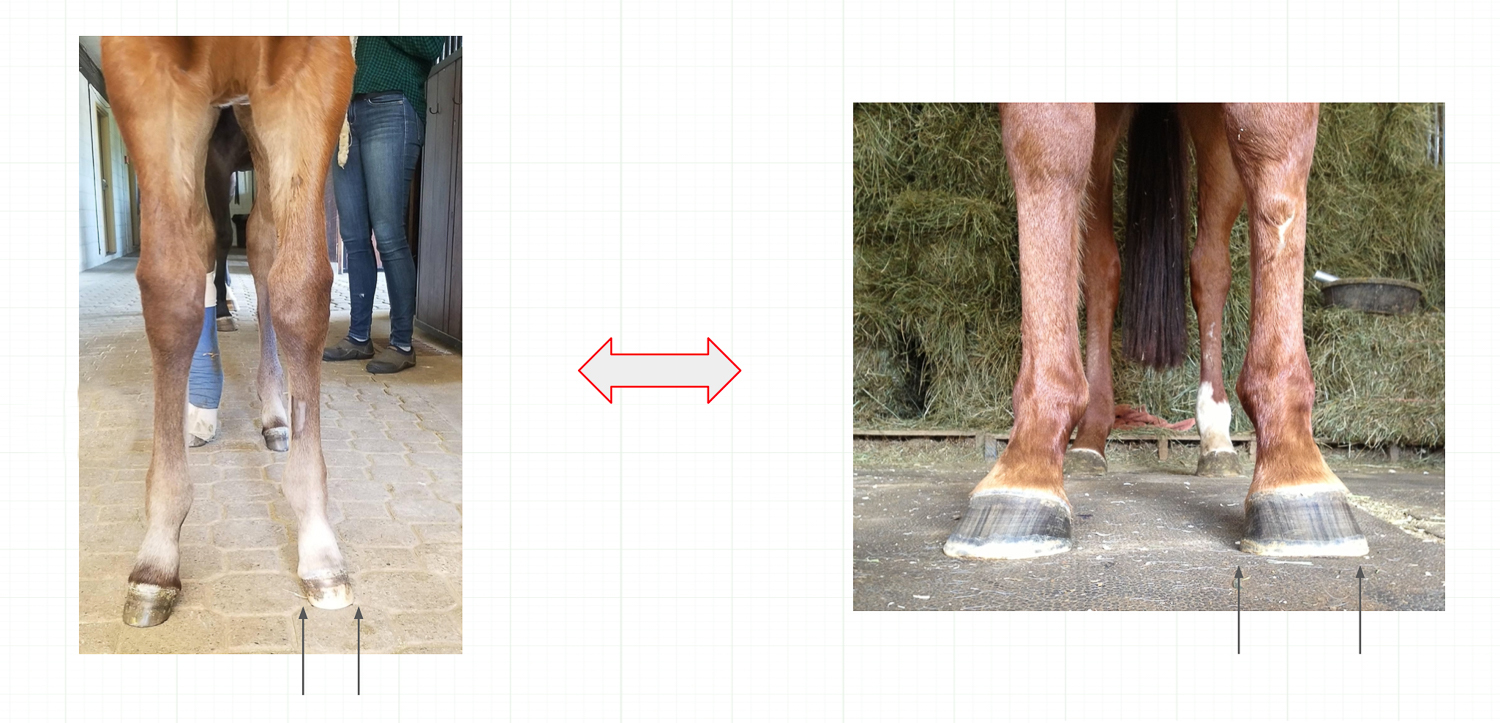
When it comes to balancing the hoof, there are many different planes on which the hoof can be in or out of balance. Angles and measurements can be taken using either photos or x-rays, depending on your veterinarian’s preference. Similarly, your farrier will do a visual assessment when he looks at your horse’s feet, making determinations based on what he sees.
But, how does your veterinarian or farrier determine what is or is not in balance? It’s difficult to know for sure based on visual assessment alone, but Kelleher said that visual assessment accompanied by physical assessment can still yield fairly accurate results. And even with measurements, sometimes those measurements cannot be adjusted back into a normal range. “The hoof can be manipulated only so much without serious negative consequences,” Kelleher warned. “Regardless of the measurements, a farrier may not be able to trim a hoof to the ideal [measurement] because the hoof available on the horse may not be of quality or quantity capable of manipulation.”
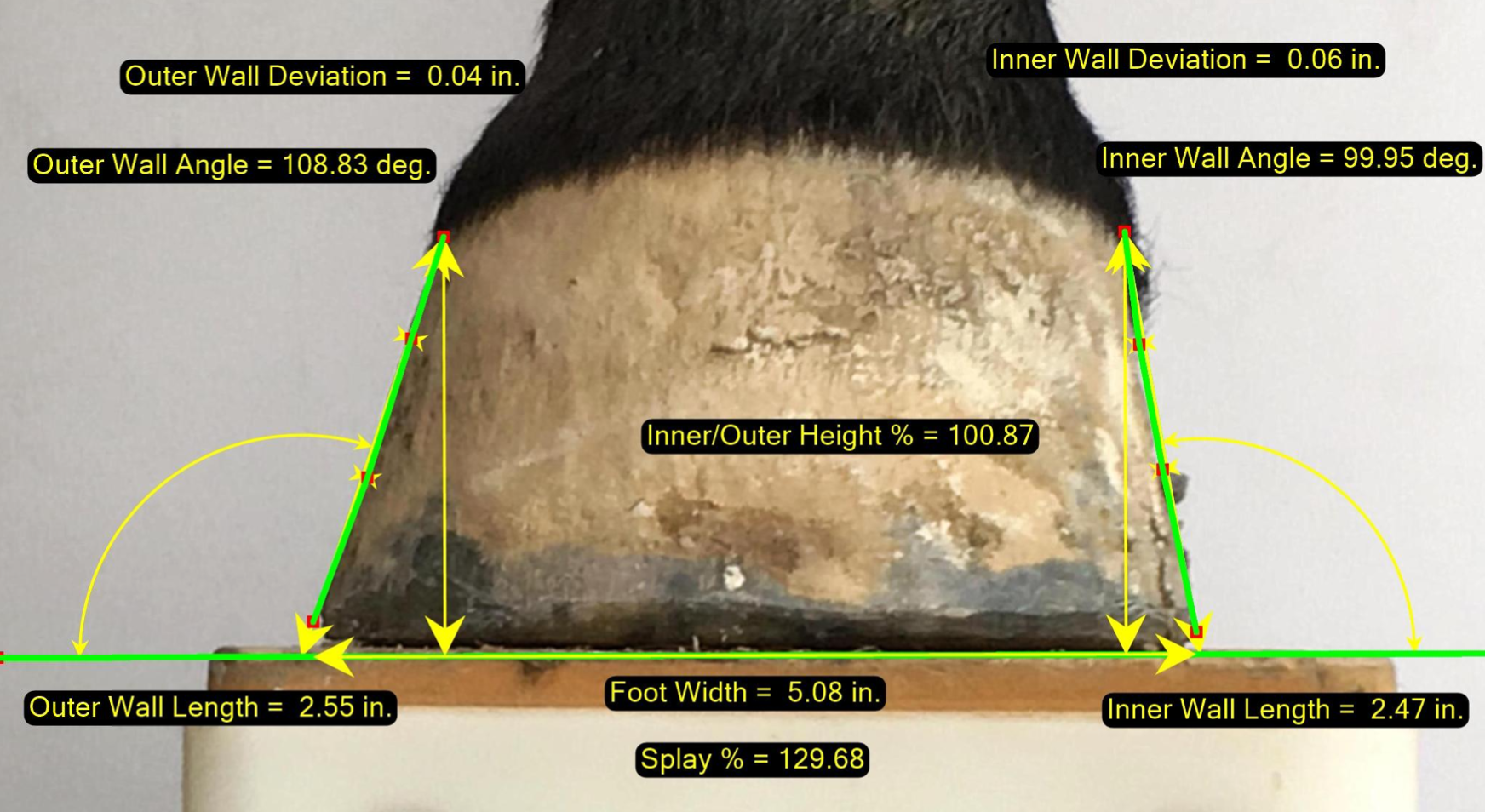
When assessing a hoof’s conformation, there are a few aspects that Kelleher pays close attention to. When looking straight on at the hoof, she looks at the coronary band and at the length of the medial and lateral hoof wall. “I draw an imaginary line at the dorsal aspect of the coronary band and compare that to the flat even ground surface. Are these lines parallel? Then I check the medial and lateral aspects of the foot – is there a straight line coming down from the coronary band to the ground?”
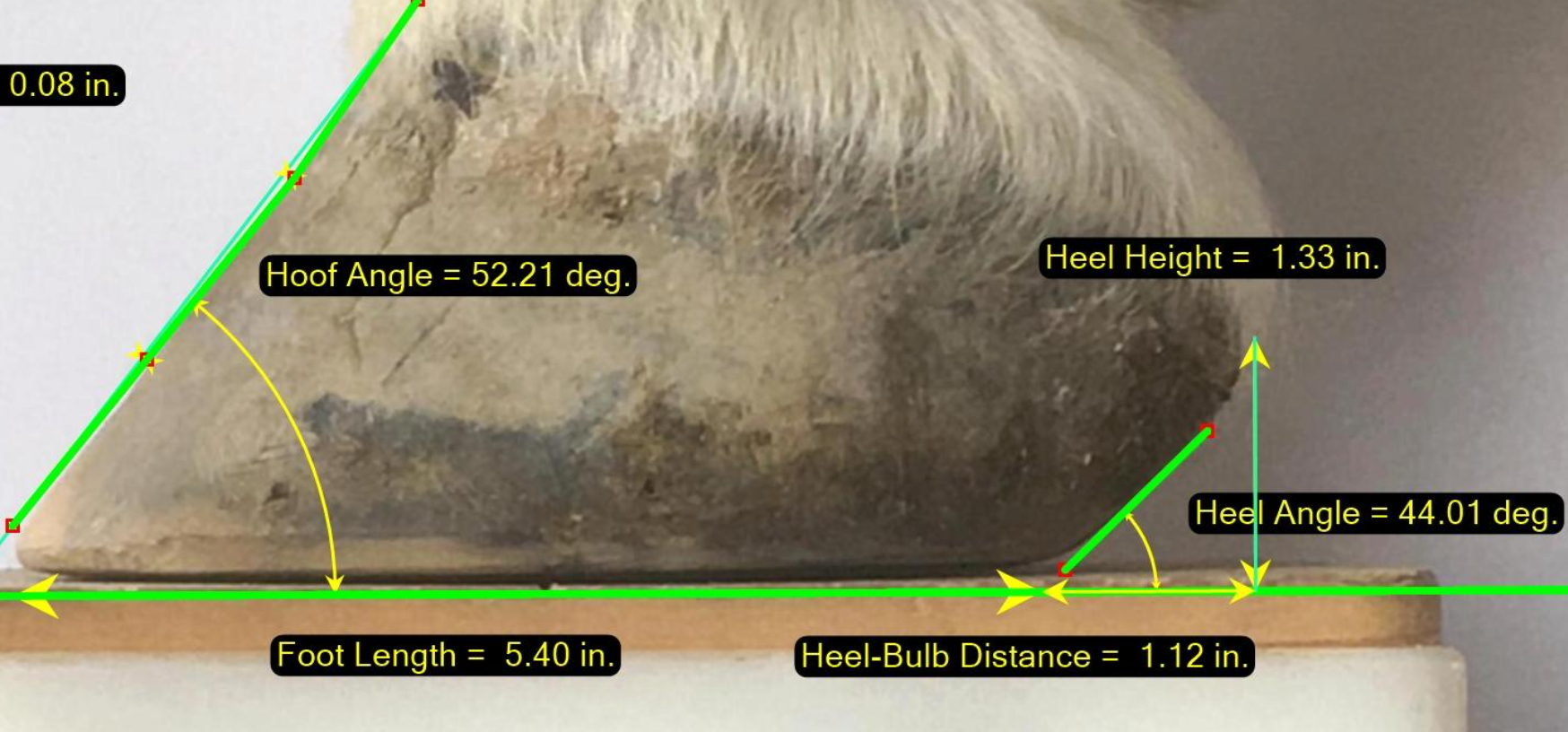
When assessing a side view of the horse’s hoof, there are a few more things to consider – hoof angle and heel angle. “Hoof angle is the angle created by the line drawn from the dorsal hoof wall and a line drawn on the solar surface. The ideal hoof angle for a forelimb is about 50 degrees and for a hind limb is about 52 degrees. The heel angle is the line of the heel and then the line on the solar surface. In the ideal foot, the hoof angle and the heel angle should be the same.”
“If the heel angle is less than the hoof angle, then the horse has an underrun heel and likely has a neutral to negative angle of its coffin bone. If the heel angle is greater than the hoof angle, then the horse has an upright or club foot and has a great than normal angle of his coffin bone.”
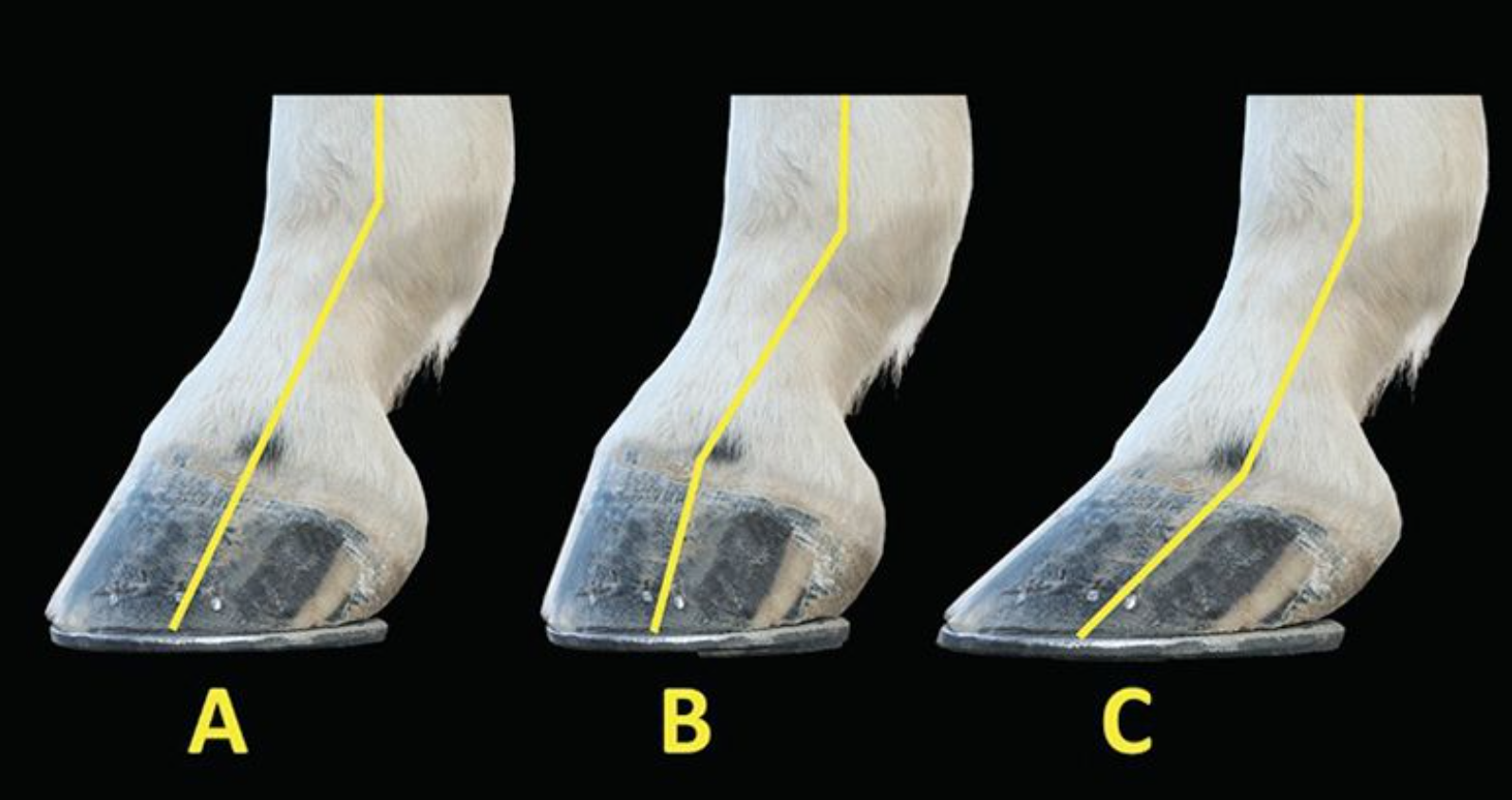
When considering the leg from the side, another aspect to consider is the hoof-pastern axis. “Coming straight down the cannon bone, when we get to the fetlock joint were going to draw a straight line to split the pastern in half. Then when we get to the coronary band, we continue the line in the plane that is parallel to the dorsal hoof wall. At the junction of our pastern line and our hoof line, if the line is bent forward toward the front of the foot, this is a broken forward hoof-pastern axis. If the line is bent backward toward the back of the foot, this is a broken back hoof-pastern axis.”
Kelleher said that, of the two types of issues with the hoof-pastern axis, she most often sees horses that are broken back. This conformation puts stress on the deep digital flexor tendon, which runs down the back of the cannon bone, and the digital cushion and navicular bone. “If any of these structures in the foot undergo more stress and strain than it’s designed for because of foot imbalance, the structures are going to be more likely to fail, and any limb that is dependent on the functionality of these structures that are negatively impacted by foot imbalance is also going to be prone to injury.”
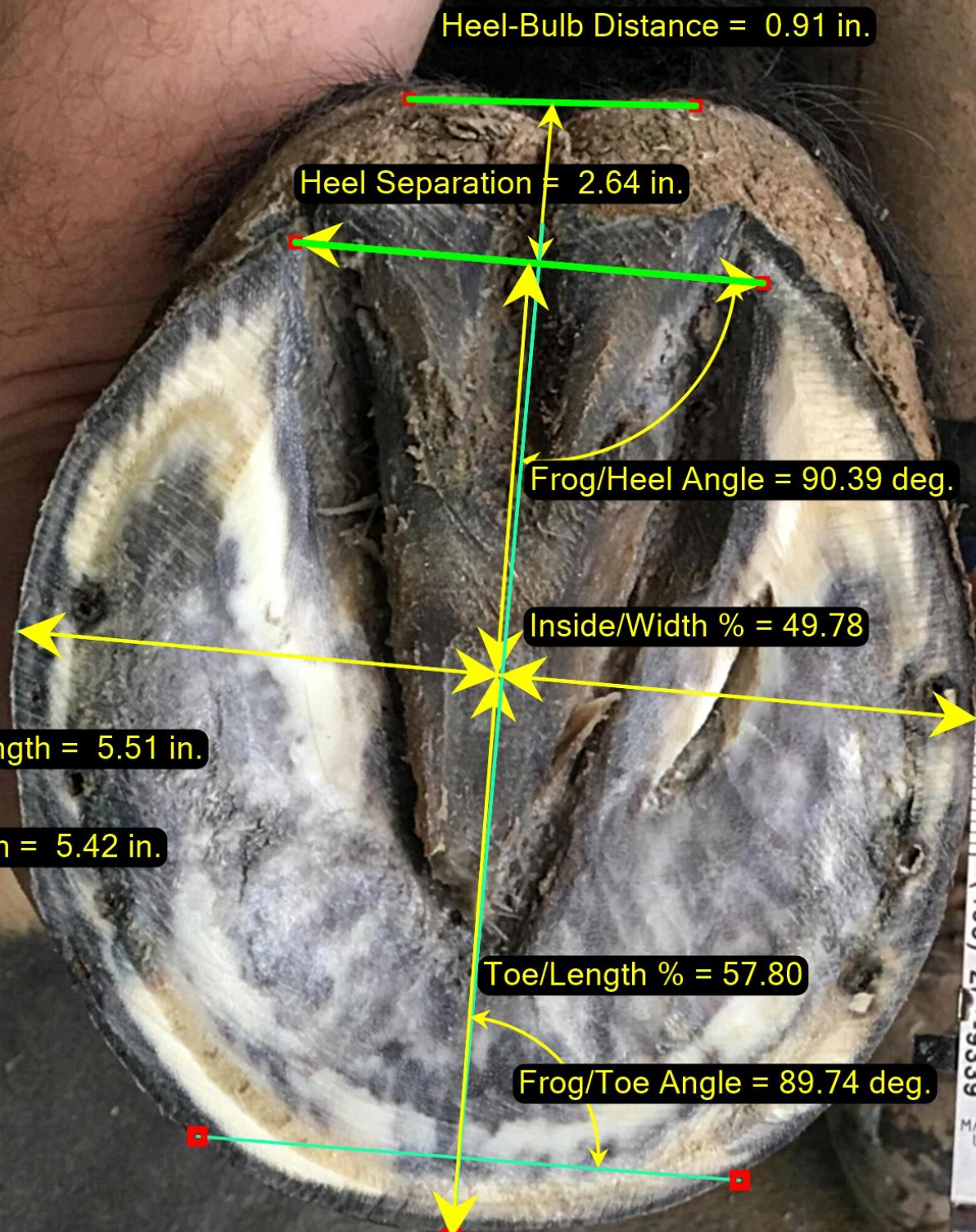
The solar surface of the hoof can also be evaluated based on measurements. You also want to see even bars on both sides and a good width between the bulbs of the heel. Kelleher said the frog should be “robust and leathery” – not too hard or too soft. Because the structures on the solar surface of the hoof impact the ground, it’s important that they are not only able to handle the impact, but that they also need to propel the horse in whichever direction its going. “We want these structures to be healthy – if they’re dry and brittle that concussion with the ground will reverberate up the limb, and if they’re wet and mushy they’re not going to be able to withstand the concussion of the body and the hoof will give in.”
The Owner-Veterinarian-Farrier Triangle
One of the keys to successfully managing your horse’s hoof health is the relationships you maintain with your veterinarian and your farrier and the relationship that your veterinarian and farrier share. Only by working as a team, Kelleher said, can you ensure that your horse receives the best possible care and management.
“Hopefully your horse sees both of these professionals on a regular basis,” Kelleher elaborated. “While you might not see either of them as regularly as your horse does, you should at least be having conversations with them every time one of them sees your horse.”
Kelleher urged horse owners to let the farrier make a determination about how often they see your horse based on your horse’s individual needs. While textbooks say 6-8 weeks is average for most horses, your horse may have different needs and it’s up to your farrier to decide what will be best. “Hoof growth can vary for a number of different reasons,” Kelleher said. “Season, nutritional input, the horse’s overall health status mean that interval may not always be constant.”
Kelleher advocated for veterinarians and farriers connecting when an adjustment needs to be made to the hoof. “There needs to be dialogue between the three humans [owner, veterinarian, and farrier] – if your horse is having a problem and the veterinarian suggests a treatment, the farrier should have an opportunity to weigh in and the vet and farrier can work together to come up with a solution.”
About Dr. Maureen Kelleher
Dr. Maureen Kelleher earned her Doctor of Veterinary Medicine at the University of California, Davis in 2006. She then completed an internship at Pioneer Equine Hospital in Oakdale, California, and a residency in equine surgery at University of California, Davis. Before joining the EMC, Dr. Kelleher gained years of experience in equine private practice in California with a focus on equine sports medicine and lameness, advanced diagnostic imaging, and acupuncture. She became a certified veterinary acupuncturist in 2010 and earned Diplomate status with the American College of Veterinary Surgeons in 2013. Dr. Kelleher focuses on the assessment and non-surgical treatment of performance-limiting problems in sport horses. She works closely with EMC's therapeutic farrier team and its medicine and surgery teams, utilizing advanced diagnostic imaging capabilities to provide equine patients with superior care.

